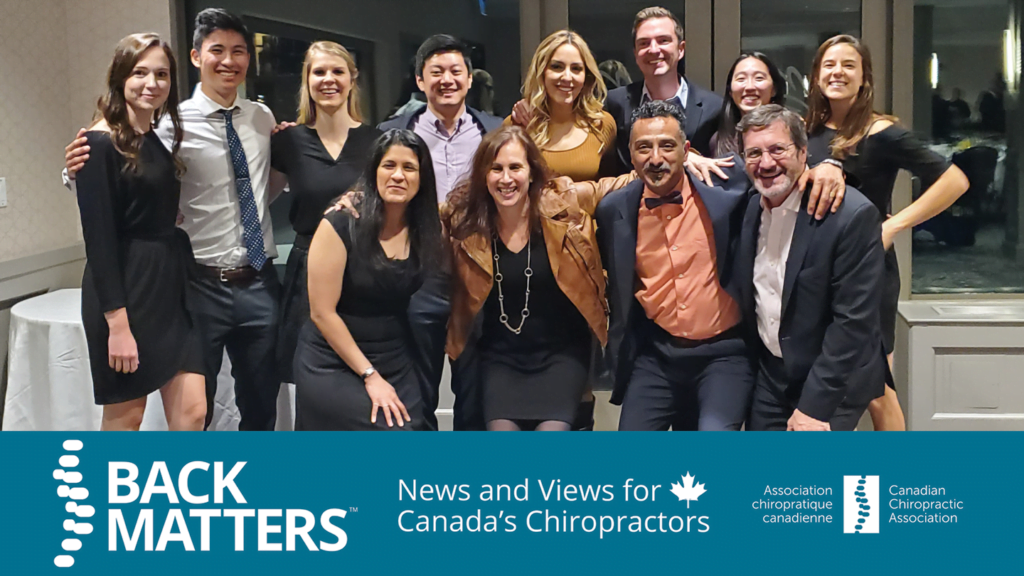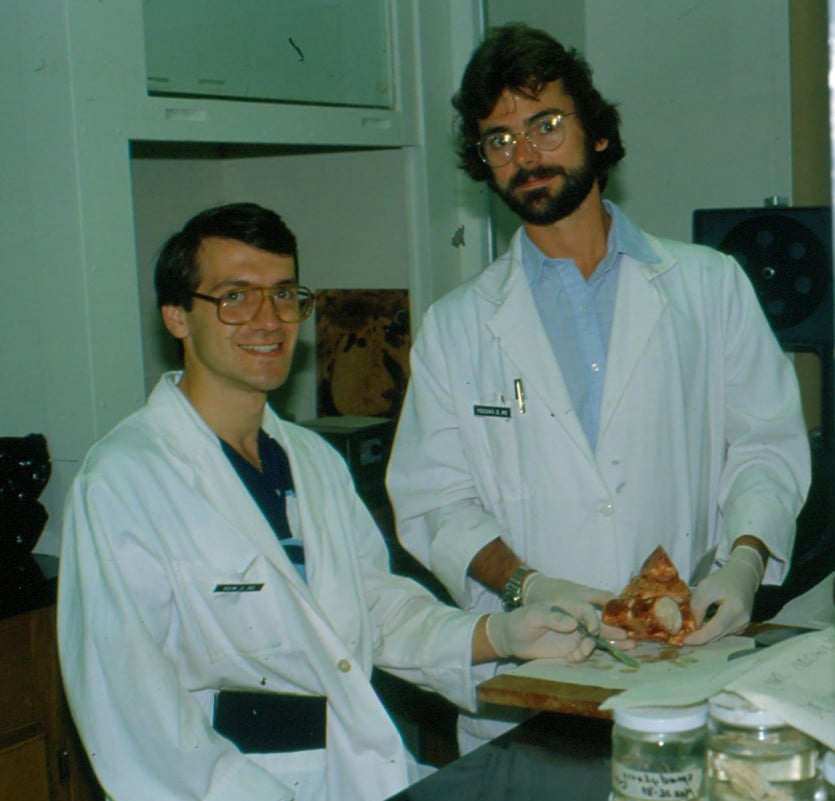Changing course: When the research captain becomes the shipmate


Dr. Silvano Mior tells his residents when they start their post-graduate program with him that his job is to make them smarter than he is by the end. And many who he taught, have become nationally and internationally renowned leaders and researchers. Now over 40 years later, students in residency and graduate programs are still the fire that keeps Dr. Mior going.
“These researchers are so bright and so brilliant in what they’re doing, that I sit back and learn from them.”
Dr. Mior’s chiropractic story began like many CCA members. He was a teenager suffering from sports-related injuries who then experienced a quick and positive patient outcome after seeing a chiropractor.
At the time, he wasn’t familiar with chiropractic; this was when his curiosity started to grow. Little did he know he would eventually become one of the leading researchers of the profession.
How did this the drug-free, hands-on approach work so effectively?
His chiropractor, Dr. Michael Livingston, would spend time after seeing patients, discussing chiropractic with him and even gave him a tour of the Canadian Memorial Chiropractic College (CMCC), and introduced him to clinic faculty.
“Most of my high school counselors told me to go into medicine,” said Dr. Mior. But Livingston highlighted both the positive and challenging sides of the profession, so Mior eventually applied and was accepted at CMCC. “He was right, there have been challenging times being a chiropractor, but overall, it has been very rewarding career.”


When he was entering chiropractic college, he recalls there was much attention given to the mechanisms underlying what chiropractors do, from explaining pain and how manipulation works – but at the time, this work was in its infancy, and there were few researchers in the profession. “I learned about the residency program early on and I knew that’s what I wanted to do. I had this interest in research, asking questions, searching for answers, and comfortable thinking outside of the box.”
During his time as a director of the residency program at CMCC in the late 80s and into the 90s, he started to see chiropractic researchers moving beyond studying the mechanics of what they did and shifted towards understanding the clinical side of things, conducting observational and cross-sectional studies, and engaging in randomized control trials.
“Back then, we relied on the evidence created by other professions,” he said. “But now we can draw on our own work – work being conducted internationally at a level that I only dreamed about.”
Back in his clinical residency in 1980, Dr. Mior had the opportunity to spend time at the University Hospital in Saskatoon. He had the opportunity to interact with surgeons, chiropractors, and to see and treat patients with conditions he had only read about. Working with Drs. David Cassidy and William Kirkaldy-Willis made a huge impression on him and changed the direction of where he saw his career going.
A career sparked in his fourth year of chiropractic college, when he investigated the effect of manipulation of the sacroiliac joint on the parameters of gait. Encouraged by Dr. Adrian Grice, he became interested in understanding the underlying biomechanics and assessment of what chiropractors do with manipulation and palpation. How reliable and valid were methods of assessment? This led to a series of collaborations with Dr. Marion McGregor, DC, PhD, exploring the reliability and validity of clinical procedures.
In the early 90s, Mior explained there was a push in the profession to start developing guidelines. “There was a group of forward thinking chiropractors in the United States led by Dr. Scott Haldeman, that wanted to develop guidelines or parameters of care for the profession, which became known as Mercy Center document.” he said. “We looked at the entire scope of practice of the profession and what we did, then we looked at what evidence was available to support what we did… And at that time there wasn’t a lot of research available compared to today. But it provided the opportunity for us to examine the nature and extent of the evidence base for the profession and how it could be used to inform practice and improve what we were doing; really looking at the quality of care.”
In Canada, led by Dr. Don Henderson, we replicated the US guidelines process. This was another turning point in the course of Dr. Mior’s career – “we did our own consensus panel and published the proceedings.”
Throughout his career, Dr. Mior also saw what he considered risks to the profession. Particularly when in the mid-90s the AHCPR guidelines publication that listed manipulation as one of the first lines of treatment.
It was a huge opportunity for chiropractors because that is a big part of what chiropractors do.
“But I also saw it as a threat. Our interventions, like manipulations, work – but it does not equate to who we are as chiropractors.”
“What if the next published study doesn’t show that manipulations are effective? People will then question the efficacy of the chiropractic profession.” That led to the development of his professional mantra: “Our focus should be to best manage our patients within our full scope of practice, and not solely rely on or be defined by an intervention (i.e., adjustment/manipulation).”


Leaders in the profession were realizing the importance of quality of care and how to assess it, and how that would impact practice.
In the late 1990s, Dr. Bob Haig, then Executive Director of the Ontario Chiropractic Association, contacted Dr. Mior to seek his interest in participating in a project that would engage Ontario chiropractors to improve collaboration with medical doctors. The timing was perfect, as it was around the time that policymakers were focused on improving primary care – with a key component being interprofessional collaboration. While working at the Ontario’s Ministry of Health, it allowed him to explore and introduce a community-based patient centred model of care that engaged chiropractors with family physicians.
“I saw the opportunity for chiropractors to be part of mainstream – and to be part of the mainstream, you must participate in it. This was a really, really wonderful opportunity.”
But the real highlight of this collaboration study for Dr. Mior came during one of his end of study focus groups during which he gathered the perspectives from medical doctors, chiropractors, and particularly of patients. “A patient in my last focus group, noted, ‘I realize this is about patient-centred care and collaboration, so then why aren’t you interacting with patients more and having the patients engaged in this collaboration?’ Despite the model being patient centred, I realized how important it was to truly understand the patient experience and introduce the patient voice in everything we do. And I started refocusing my work.”
In some ways, the rest was history because from that point on, the patient voice was brought into everything he did.
The million-dollar question – where should chiropractic research go from here?
According to Dr. Mior, a major challenge is that chiropractors have always been attacked and spent considerable time having to defend themselves. But he now believes that the profession is positioned to move beyond that.
“We need to continue to focus and explore what we can do to advance the health and well-being of people – of patients. In doing so, the benefit of what we can do as a profession will be appreciated. We need to continue to think of being part of the healthcare team and a part of the entire delivery of healthcare. Focussing on the people and patients we care for, and putting them first, the rest will fall into place.”
The future of chiropractic research is in good hands. Dr. Mior continues to work with early career chiropractic researchers, many whom have become leaders in the profession and, as he said, “it’s been rewarding to watch them grow, develop and become their ‘shipmate’.”
“It’s great to see the quality of work being done and the quality of researchers that are graduating from chiropractic programs, a number who go on to pursue graduate work and PhDs. Those numbers are increasing, and their work is just extraordinary. The joint CMCC and Ontario Tech Institute for Disability and Rehabilitation Research, directed by Dr. Pierre Côté, is a prime example of such excellence and international impact.
“The day of just trying to prove who we are, in my opinion, has passed. Now it’s time to focus on how we can best contribute to the overall health and quality of care delivered to Canadians and people around the world.”